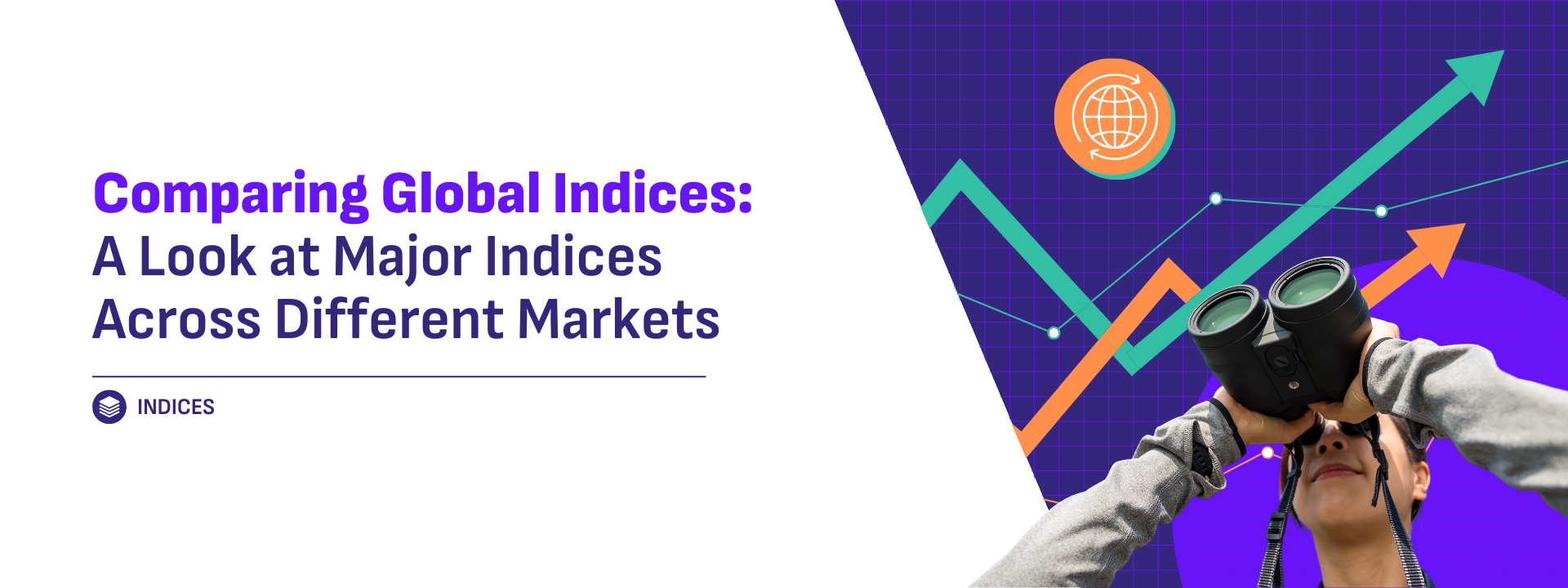

Comparing Global Indices: A Look at Major Indices Across Different Markets
Introduction
In the global financial landscape, stock market indices play a crucial role in providing benchmarks for market performance and guiding investment decisions. These indices, which vary significantly across different markets, offer insights into regional economic health and sector performance. This article compares major global indices from various markets, exploring their significance and performance characteristics.
Key Global Indices
1. S&P 500 (United States)
The S&P 500, or Standard & Poor’s 500, is one of the most well-known and widely followed indices in the world. It includes 500 of the largest publicly traded companies in the United States, representing a broad cross-section of the U.S. economy. The index is market-capitalization-weighted, meaning that larger companies have a greater impact on its performance.
- Significance: The S&P 500 is often used as a benchmark for the overall U.S. stock market and is a key indicator of U.S. economic health.
- Performance Characteristics: Historically, the S&P 500 has delivered strong long-term returns, benefiting from the growth of major technology companies and a diverse range of industries. Its performance is closely watched by investors globally.
2. Dow Jones Industrial Average (DJIA) (United States)
The DJIA is one of the oldest and most recognized stock indices, comprising 30 large, publicly traded companies across various sectors. Unlike the S&P 500, the DJIA is price-weighted, meaning companies with higher stock prices have a greater influence on the index’s performance.
- Significance: The DJIA provides a snapshot of the performance of major U.S. corporations and is often used to gauge the health of the U.S. economy.
- Performance Characteristics: While it includes fewer companies than the S&P 500, the DJIA represents some of the largest and most influential firms in the U.S. Its performance can be more volatile due to its price-weighted nature.
3. FTSE 100 (United Kingdom)
The FTSE 100 Index represents the 100 largest companies listed on the London Stock Exchange. It is a market-capitalization-weighted index, similar to the S&P 500, and provides a broad overview of the UK stock market.
- Significance: The FTSE 100 is a key indicator of the UK economy and is often used to assess the performance of British multinational companies.
- Performance Characteristics: The FTSE 100’s performance can be influenced by global economic factors, given that many of its constituent companies operate internationally. It also reflects the economic conditions and political stability of the UK.
4. DAX 30 (Germany)
The DAX 30 Index includes 30 of the largest and most liquid companies listed on the Frankfurt Stock Exchange. It is a market-capitalization-weighted index and is considered a benchmark for the German stock market.
- Significance: The DAX 30 serves as a barometer for the German economy and is often used by investors to gauge the performance of Germany’s largest corporations.
- Performance Characteristics: The DAX 30 is known for its exposure to large multinational companies and can be influenced by economic conditions across Europe. It often reflects trends in the European and global markets.
5. Nikkei 225 (Japan)
The Nikkei 225 Index tracks 225 large, publicly traded companies on the Tokyo Stock Exchange. It is a price-weighted index, similar to the DJIA, with companies having varying levels of influence based on their stock prices.
- Significance: The Nikkei 225 is a key indicator of Japan’s economic health and provides insights into the performance of major Japanese corporations.
- Performance Characteristics:The Nikkei 225’s performance can be influenced by domestic economic policies, global trade dynamics, and currency fluctuations. It is often used to assess trends in the Japanese market.
6. Hang Seng Index (Hong Kong)
The Hang Seng Index includes the largest and most liquid companies listed on the Hong Kong Stock Exchange. It is a market-capitalization-weighted index and serves as a benchmark for the Hong Kong stock market.
- Significance: The Hang Seng Index provides insights into the performance of major Hong Kong-listed companies and reflects the economic conditions in Hong Kong and China.
- Performance Characteristics: The index can be influenced by economic developments in China, global trade conditions, and changes in investor sentiment.
7. Shanghai Composite Index (China)
The Shanghai Composite Index tracks all A-shares and B-shares listed on the Shanghai Stock Exchange. It is a market-capitalization-weighted index and provides a broad overview of the Chinese stock market.
- Significance: The Shanghai Composite Index is a key indicator of the performance of China’s domestic stock market and reflects the health of the Chinese economy.
- Performance Characteristics: The index can be influenced by domestic economic policies, regulatory changes, and global market trends. It provides insights into the performance of a wide range of Chinese companies.
Comparative Analysis
1. Market Exposure
- U.S. Indices: The S&P 500 and DJIA provide insights into the U.S. market, with the S&P 500 offering a broader representation of the economy compared to the DJIA.
- European Indices: The FTSE 100 and DAX 30 reflect the performance of major European markets, with the FTSE 100 representing the UK and the DAX 30 focusing on Germany.
- Asian Indices: The Nikkei 225, Hang Seng Index, and Shanghai Composite Index provide insights into major Asian markets, with a focus on Japan, Hong Kong, and China.
2. Performance Characteristics
- Volatility: Price-weighted indices like the DJIA and Nikkei 225 can exhibit more volatility due to their weighting methods, while market-capitalization-weighted indices like the S&P 500 and FTSE 100 offer a more balanced view of market performance.
- Global Influence: Indices such as the FTSE 100 and Hang Seng Index are influenced by global economic trends, while domestic indices like the Shanghai Composite Index are more reflective of local market conditions.
3. Investment Strategies
- Diversification: Investors can use a combination of global indices to diversify their portfolios and gain exposure to different markets and sectors.
- Benchmarking: Major indices serve as benchmarks for evaluating investment performance and making informed investment decisions based on market trends.
Summary
Major global indices provide valuable insights into the performance and health of stock markets across different regions. By comparing indices such as the S&P 500, DJIA, FTSE 100, DAX 30, Nikkei 225, Hang Seng Index, and Shanghai Composite Index, investors can gain a comprehensive understanding of global market dynamics and make informed investment decisions. These indices not only serve as benchmarks for performance measurement but also offer strategic insights into regional and global economic trends.

